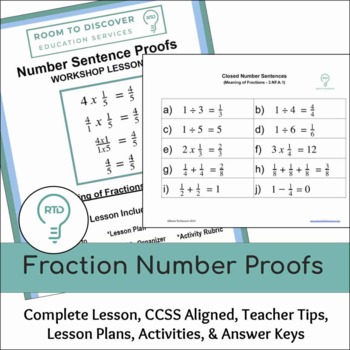Fraction Number Proofs
- PDF
Description
Want to engage your students in studying number proofs? Number proofs are an engaging way for students to develop numeracy and algebraic thinking through problem-based learning. This lesson includes everything you will need for a 60-90 minute hands-on exploration.
In this workshop, students will prove or disprove number of sentences relating to the meaning of unit-fractions. They will also develop an understanding of non-unit fractions as a multiple of unit fractions.
This math-workshop lesson is designed to be taught in a live classroom. Your students will think deeply and learn through collaboration!
(3.NF.A.1)
What's Included:
✰ An introduction to teaching fractional proofs
✰ A complete lesson plan
✰ Interactive student slides activity
✰ A print-friendly version of the activity
✰ An answer key
✰ A rubric
You might also be interested in these other resources:
• Related Products
★ Fraction Division Word Problem Digital Slides Activity (6.NS.A.1)
★ Fraction Number Proofs (3.NF.A.1)
★ Fraction Multiplication Word Problem Digital Slides Activity (5.NF.B.4)
★ Fractional Quotients Word Problem Digital Slides Activity (5.NF.B.3)
★ Fraction QuickStart Guide
This product, however, will do a few things for you and your sanity to allow you to fully enjoy teaching your students:
✰ Cut down on your prep time
✰ Lesson plans are already created and ready to go
✰ Pre-organized
✰ Comprehensive and driven by proven results
✰ Free updates
--------------------------------------------------------------------------------------------------------------
How do I find out about and access new materials as they are posted?
Don't forget that leaving feedback earns you points toward FREE TPT purchases. I love that feedback!
✔Also, follow me and be notified when new products are uploaded.
--------------------------------------------------------------------------------------------------------------
Contact Me ☟
✰ Blog
✰ Email newsletter
✰ Facebook
✰Instagram
✰Twitter





